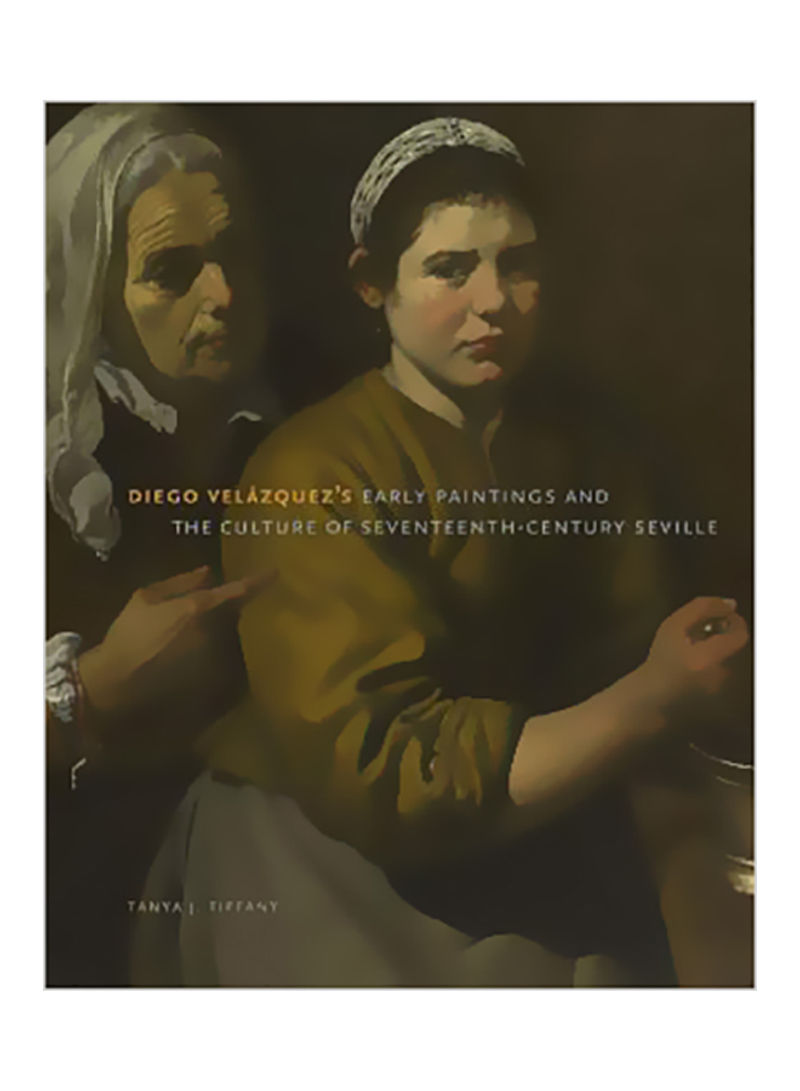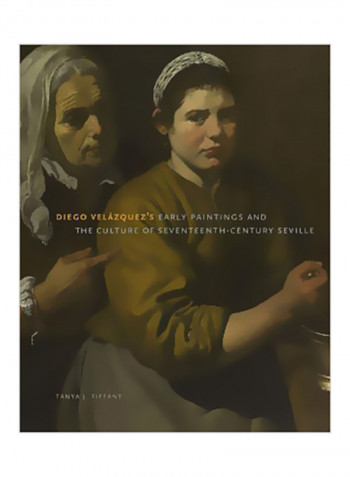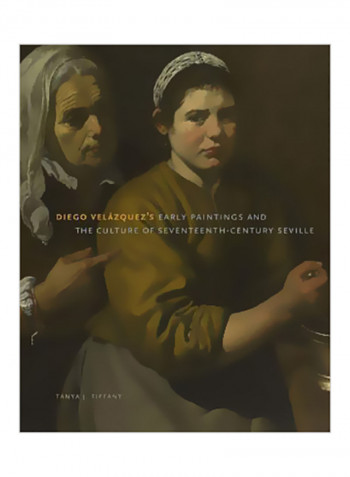Diego Velázquez's Early Paintings And The Culture Of Seventeenth-Century Seville Hardcover
Recommend
Sort by
Rating
Date
Specifications
Grade
New
Author 1
Tanya J. Tiffany
Book Description
Diego Velazquez spent his formative years at the center of artistic life in seventeenth-century Seville, a gateway to the New World characterized by intellectual debate, religious fervor, and mounting ethnic tensions. Yet critics have often divorced the painter's novel style and subject matter from the city's unique pictorial and cultural traditions. In Diego Velazquez's Early Paintings and the Culture of Seventeenth-Century Seville, Tanya J. Tiffany demonstrates that Velazquez's works not only engaged Seville's social practices but also raised issues of vital importance to seventeenth-century Sevillians. As a young artist, Velazquez contended with such essential questions as women's place in society, the nature of artistic creativity, the role of religion in everyday life, and the incorporation of racial minorities into Christianity. This study offers close readings of individual paintings with regard to their historical framework, critical context, and early reception. Through this approach, Tiffany illuminates well-known masterpieces and also highlights the fluid boundaries between high art and popular forms of visual expression.
ISBN-13
9780271053790
Language
English
Publisher
Pennsylvania State University Press
Publication Date
28 Nov 2012
Number of Pages
256
About the Author
Tanya J. Tiffany is Associate Professor of Art History at the University of Wisconsin-Milwaukee.
Editorial Review
"The strength of Tiffany's study is the wealth of contextual detail provided for the four genres of painting she examines. Her book offers a valuable survey of the social, intellectual and spiritual history of Seville, with a marked focus on the latter."-Jeremy Roe, Bulletin of Spanish Studies "Throughout this beautifully illustrated and exhaustively documented book, Tiffany highlights 'the inseparability of the young Velazquez from the visual and intellectual culture of early seventeenth-century Seville' and successfully shows how the 'Sevillian foundations of his art' had a lasting impact in his later career at court. . . . This is an important contribution to the literature on one of the foundational figures of Spanish art, highly recommended to students and scholars alike."-Carmen Ripolles, caa.reviews "Throughout this beautifully illustrated and exhaustively documented book, Tiffany highlights 'the inseparability of the young Velazquez from the visual and intellectual culture of early seventeenth-century Seville' and successfully shows how the 'Sevillian foundations of his art' had a lasting impact in his later career at court. While this in itself is not new, Tiffany brings a fresh understanding of the conditions that made it possible. Her examination of a wide variety of textual and visual sources alongside Velazquez's paintings from this period, for instance, transforms the long-held but poorly understood notion of Velazquez's erudition-often associated with Velazquez's later career in Madrid but, as demonstrated here, deeply rooted in the artist's Sevillian period. Furthermore, Tiffany also contributes to the reassessment of Pacheco, who emerges as an effective teacher completely in tune with the artistic debates of the day (foremost the question of naturalism) and a crucial player in Velazquez's artistic development, both through his teachings and through his connections with Seville's religious and intellectual elites. By bringing attention to these connections, moreover, Tiffany sheds light on the vibrant culture of seventeenth-century Seville and its social, artistic, and religious realities (including rarely discussed contemporary theories of race). Ultimately, by situating Velazquez's works in dialogue with this context, Tiffany also challenges the tendency to isolate the artist from the Spanish artistic context. In this way, rather than standing in opposition to the rich culture of Seville, he becomes its most eloquent interpreter."Diego Velazquez's Early Paintings and the Culture of Seventeenth-Century Seville has wide-ranging methodological implications for the study of Spanish art, which has tended to lag behind in this regard, and similar studies on other Sevillian artists-Francisco Zurbaran, Alonso Cano, Bartolome Esteban Murillo-would be a welcome addition to the history of early modern Spanish painting. In short, this is an important contribution to the literature on one of the foundational figures of Spanish art, highly recommended to students and scholars alike." -Carmen Ripolles, caa.reviews "For almost four decades, [the] focus on Velazquez's activity in Madrid has produced an emphasis on patronage as an interpretive perspective, and simultaneously on the artist's success in social climbing. Tiffany also covers patrons in Seville, and Velazquez's connections to Juan de Fonseca certainly facilitated his later career. Tiffany's detailed account of these and other Sevillian links make a substantial contribution in this area. Yet Tiffany's most important chapters seek to reconstruct the social imaginary surrounding several major Sevillian paintings, where she connects these works to gender roles, race, and the problem of controlling sexual desire among the devout."-Gridley McKim-Smith, Renaissance Quarterly "Tiffany has written a book that supersedes all previous studies of the type and makes a major contribution to our understanding of the artist and his world."-John Marciari, Burlington Magazine "Tanya Tiffany's book is by far the most in-depth examination to date of Diego Velazquez's early paintings in relation to the culture and society of early seventeenth-century Seville, Spain's most cosmopolitan city in that period. Combining rigorous research and meticulous attention to pictorial composition, the chapters offer sustained, original analysis of works from all the major genres Velazquez cultivated in his formative years. Tiffany brings a commanding range of textual sources to bear on her analysis, including hagiographies, poetry, devotional manuals, and conduct books. The breadth of visual sources examined alongside the major paintings-prints, polychrome sculptures, and ephemeral paintings-is also impressive, transcending anachronistic divisions between popular and elite art in the early modern period. Throughout, Tiffany reconstructs as much as possible the original circumstances of Velazquez's production. The result is a richly illuminating book about the social and cultural life of Velazquez's early paintings and the world to which they belonged. It will thus be indispensable to students and scholars not only of art history but also of early modern Spanish culture more broadly."-Laura R. Bass, Tulane University "Drawing upon a wealth of new sources, Tanya Tiffany has managed to reconstruct the social, intellectual, and religious world of Seville as it was when Spain's most celebrated seventeenth-century artist lived there. Especially revealing are her detailed readings of his early works, his deservedly celebrated bodegones among them. The result is a strikingly original and wholly convincing understanding of this still poorly understood phase in Velazquez's artistic career. This handsome volume deserves a place on the bookshelf of anyone seriously interested in Velazquez, let alone the art and history of Golden Age Spain."-Richard Kagan, The Johns Hopkins University "Tanya Tiffany's mastery of the documentary, historical, theological, ethnographic, and literary material of Africans in Seville is meticulous, broad, and thorough. This is a significant contribution to the field. It offers new interpretations and advances theoretical discussions of race, gender, iconographical description, intellectual life, and Velazquez's historical stature in important paintings."-Gridley McKim-Smith, Andrew W. Mellon Professor in the Humanities, Bryn Mawr College



